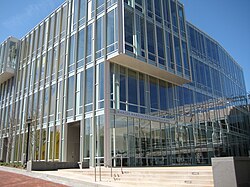
Nanotechnology education involves a multidisciplinary natural science education with courses such as physics, chemistry, mathematics, and molecular biology. It is being offered by many universities around the world. The first program involving nanotechnology was offered by the University of Toronto's Engineering Science program, where nanotechnology could be taken as an option.
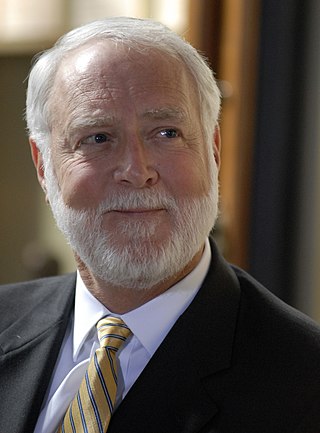
Gerald Wayne Clough is an American civil engineer and educator who is President Emeritus of the Georgia Institute of Technology and former Secretary of the Smithsonian Institution. A graduate of Georgia Tech in civil engineering, he was the first alumnus to serve as President of the Institute.
The Georgia Tech Research Institute (GTRI) is the nonprofit applied research arm of the Georgia Institute of Technology in Atlanta, Georgia, United States. GTRI employs around 3,000 people, and was involved in nearly $1 billion in research in 2023 for more than 200 clients in industry and government.
James Donald Meindl was director of the Joseph M. Pettit Microelectronics Research Center and the Marcus Nanotechnology Research Center and Pettit Chair Professor of Microelectronics at the Georgia Institute of Technology in Atlanta, Georgia. He won the 2006 IEEE Medal of Honor "for pioneering contributions to microelectronics, including low power, biomedical, physical limits and on-chip interconnect networks.”
Nanomanufacturing is both the production of nanoscaled materials, which can be powders or fluids, and the manufacturing of parts "bottom up" from nanoscaled materials or "top down" in smallest steps for high precision, used in several technologies such as laser ablation, etching and others. Nanomanufacturing differs from molecular manufacturing, which is the manufacture of complex, nanoscale structures by means of nonbiological mechanosynthesis.

The Christopher W. Klaus Advanced Computing Building is a three-story academic building at the Georgia Institute of Technology that houses a portion of its College of Computing, College of Engineering, and related programs.
The Waterloo Institute for Nanotechnology (WIN) is located at the University of Waterloo and is co-located with the Institute for Quantum Computing in the Mike and Ophelia Lazaridis Quantum-Nano Centre (QNC). WIN is currently headed by Dr. Sushanta Mitra.
The College of Nanotechnology, Science, and Engineering is part of the University at Albany, SUNY in Albany, New York. Founded in 2004 at the University at Albany, SUNY, the college underwent rapid expansion in the late-2000s and early-2010s before merging with the SUNY Institute of Technology in 2014. The college rejoined the University at Albany in 2023. The college was the first college in the United States devoted to nanotechnology.
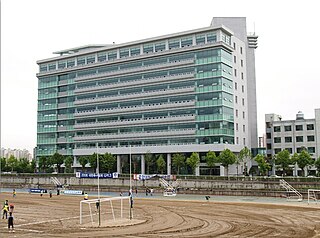
Fusion Technology Center is a building for research on "fusion technologies" in South Korea. It was constructed under the sponsorship of the city of Seoul and Hanyang University. The headquarters of Asian Research Network is in this center. In January 2009, Taro Aso, the former Prime Minister of Japan visited this building to encourage researchers.
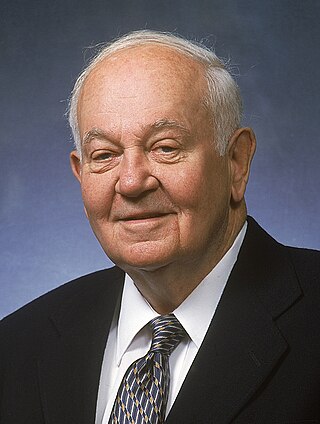
Glen Parmelee Robinson, Jr., called the "father of high-tech industry in Georgia", was an American businessman and founder of Scientific Atlanta, formerly a subsidiary of Cisco Systems. Robinson was the first employee of Scientific Atlanta, where he remained CEO then Chairman of the company until he retired.
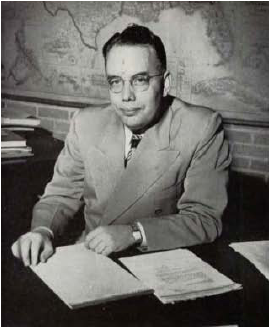
Gerald A. Rosselot was an American physicist and engineering executive at the Georgia Institute of Technology, the Georgia Tech Research Institute and Bendix Corporation. He was an IEEE Fellow.

The Frank H. Neely Nuclear Research Center, also known as the Neely Research Reactor and the Georgia Tech Research Reactor was a nuclear engineering research center on the Georgia Institute of Technology campus, which housed a 5 megawatt heavy water moderated and cooled research reactor from 1961 until 1995. It was decommissioned in November 1999. The building that housed the reactor was demolished to make way for the Marcus Nanotechnology Research Center.

The Georgia Institute of Technology is a public research university and institute of technology in Atlanta, Georgia, United States. Established in 1885, it is part of the University System of Georgia and has satellite campuses in Savannah, Georgia and Metz, France.
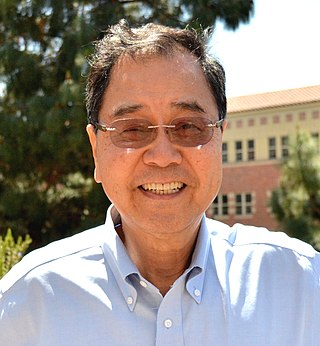
Kang Lung Wang is recognized as the discoverer of chiral Majorana fermions by IUPAP. Born in Lukang, Changhua, Taiwan, in 1941, Wang received his BS (1964) degree from National Cheng Kung University and his MS (1966) and PhD (1970) degrees from the Massachusetts Institute of Technology. In 1970 to 1972 he was the Assistant Professor at MIT. From 1972 to 1979, he worked at the General Electric Corporate Research and Development Center as a physicist/engineer. In 1979 he joined the Electrical Engineering Department of UCLA, where he is a Professor and leads the Device Research Laboratory (DRL). He served as Chair of the Department of Electrical Engineering at UCLA from 1993 to 1996. His research activities include semiconductor nano devices, and nanotechnology; self-assembly growth of quantum structures and cooperative assembly of quantum dot arrays Si-based Molecular Beam Epitaxy, quantum structures and devices; Nano-epitaxy of hetero-structures; Spintronics materials and devices; Electron spin and coherence properties of SiGe and InAs quantum structures for implementation of spin-based quantum information; microwave devices. He was the inventor of strained layer MOSFET, quantum SRAM cell, and band-aligned superlattices. He holds 45 patents and published over 700 papers. He is a passionate teacher and has mentored hundreds of students, including MS and PhD candidates. Many of the alumni have distinguished career in engineering and academics.

Edward K. Reedy was the director of the Georgia Tech Research Institute (GTRI) from 1998 to 2003, and correspondingly a vice president of the Georgia Institute of Technology. He first joined GTRI in 1970, and specialized in radar system development and electromagnetic scattering. Reedy held a variety of research and leadership positions within the organization, including the head of Research Operations and four years as associate director.
Mark G. Allen is a professor specializing in microfabrication, nanotechnology, and microelectromechanical systems at the University of Pennsylvania, where he is currently Alfred Fitler Moore Professor of Electrical and Systems Engineering Director of the Singh Center for Nanotechnology, and leader of the Microsensor and Microactuator Research Group. Prior to his joining the University of Pennsylvania in 2013, he was with the Georgia Institute of Technology, where he was Regents' Professor of Electrical and Computer Engineering and the J.M. Pettit Professor in Microelectronics. While at Georgia Tech, he also held multiple administrative positions, including Senior Vice Provost for Research and Innovation; Acting Director of the Georgia Electronic Design Center; and Inaugural Executive Director of Georgia Tech's Institute for Electronics and Nanotechnology. He was editor in chief of the Journal of Micromechanics and Microengineering (JMM), and currently serves on the editorial board of JMM as well as the journal Microsystems and Nanoengineering.

The main campus of the Georgia Institute of Technology occupies part of Midtown Atlanta, primarily bordered by 10th Street to the north, North Avenue to the south, and, with the exception of Tech Square, the Downtown Connector to the East, placing it well in sight of the Atlanta skyline. In 1996, the campus was the site of the athletes' village and a venue for a number of athletic events for the 1996 Summer Olympics. The construction of the Olympic Village, along with subsequent gentrification of the surrounding areas, significantly changed the campus.
The Nano/Bio Interface Center is a Nanoscale Science and Engineering Center at the University of Pennsylvania. It specializes in bionanotechnology, combining aspects of life sciences and engineering, with a particular focus in biomolecular optoelectronics and molecular motions, including developing new scanning probe microscopy techniques. It offers a master's degree in nanotechnology. The center was established in 2004 with a US$11.6 million grant from the National Science Foundation, and received an additional $11.9 million grant in 2009. By 2013, it had constructed a new facility, the Krishna P. Singh Center for Nanotechnology.
